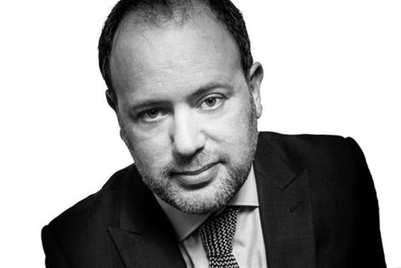
Hungry for growth, multinational food companies such as Mars, Nestlé, Mondelez, Ferrero and Hershey are expanding their presence in key markets in Asia, including China, India, Japan and Indonesia. The chocolate migration involves significant investment for capacity upgrades, distribution and marketing.
Foreign confectionery players initiated 18 major projects in Asia in 2013, according to a Confectionery-news.com report.
The entire region, particularly China, is critical to Hershey’s global growth vision, says Richard Camacho, vice-president of supply chain solutions for AEMA at Hershey’s. In line with that, the American confectioner opened a new plant in Malaysia, a US$250 million investment which represents the single-largest Asia expenditure in the company’s 18-year history in the region.
There is good reason to be bullish about Asia. Chocolate consumption has been growing rapidly. According to Euromonitor, chocolate sales in Asia grew 6 per cent in 2012 with combined sales of $12.8 billion. There is room for more growth; the per-capita consumption of chocolate in Asia is well below levels in Europe and the United States. Where Asians consume just 0.2kg of chocolate per year, their European and American counterparts eat as much as 4.7kg and 4.6kg, respectively.
Japan is one of the largest chocolate markets in Asia, but China, India, Indonesia and Vietnam are showing the fastest value sales growth. The market in China, Vietnam and India saw double-digit growth, and Indonesia grew 9.6 per cent in 2013.
These Asian countries are among the top value sales contributors for Mars, Nestlé, Mondelez, Ferrero and Hershey. In 2013, Asia contributed 11 per cent of Mars’ value sales. Hershey’s was about 4 per cent during the same period.
In Asia, chocolate is positioned as a gift and fares very well in a region that has multiple gift-giving occasions. An expanding middle class and rising incomes also contribute to the popularity of foreign brands.
|
NEW MNC FACTORIES AND UPGRADES: 2009-2013
Source: ConfectioneryNews.com |
Consumers are likely to purchase chocolates on impulse, says Michael Joyce, executive director of Ipsos ASI in Hong Kong. Key players have picked up on the trend and are increasingly focused on in-store strategies to drive volume. Brands are also tweaking product packaging and pushing smaller sizes in a bid to be seen as affordable
Each firm is adopting a unique strategy in the region. Joyce noted that one major brand has an aggressive distribution strategy that emphasises high visibility in-store, while another firm has adopted a low-price ‘fun’ positioning. A third brand has far lower investment on in-store positioning and packaging, but consumers see it as a premium gift giving option.
Hershey’s has invested in China-specific product innovations including Lancaster (Yo-man in Chinese) and Kisses Deluxe. It also entered into an agreement to acquire Shanghai Golden Monkey, a move that would give it significant distribution capability to traditional trade outlets.
Its rival, Mars, has the early entrant advantage and was the first chocolate company to open a manufacturing unit in China. Aware that it is perceived as a premium product, Ferrero focuses on selling at high-end retail outlets.
Hershey’s Asian push is a part of the company’s plans to expand outside the US, its largest market, where it trails Mars. International sales make up only 16.1 per cent of Hershey’s $6.6 billion sales. The new factory is an important distribution centre for the company and could help it achieve its $2 billion sales target from business outside the US and Canada.
“The chocolate segment in China is experiencing double-digit growth, and we are excited about the opportunity China represents,” Camacho says. “We will continue to make disciplined investments in the region as demand for our iconic brands grow.”
The firm plans to continue expanding distribution while ramping up TV advertising.
EXPERT OPINION Emerging markets a focus for growth
 Adhitya Nugroho, research manager, Euromonitor
Adhitya Nugroho, research manager, Euromonitor
Chocolate’s appeal as a gift is growing in emerging markets, driven by a growing middle class and perceptions of the confectionery being a premium product.
Multinationals such as Mars, Nestlé, Mondelez, Ferrero and Hershey have a strong presence in key markets in Asia. A recent Euromonitor survey found that Asian countries — particularly China and India — were among the best sales contributors for top multinationals.
In 2013, Asia contributed 11 per cent of Mars’ value sales. Other multinationals get less than 10 per cent of sales from the region, but were focusing on organic growth. Some, such as Ferrero, are focusing on affordable premium products, while others are targeting mass segments.
As for distribution, most foreign players are focused on modern retail. Still, Nestlé and Mondelez, with products such as Kit Kat and Cadbury, can penetrate deeper through traditional grocery channels.
The economies of the key markets are projected to be on a positive trajectory over the next five years. This will lead to further expansion of the middle income population, a key target market for chocolate companies.
However, there are some factors that could dampen this growth. Chocolates are heat sensitive products and require regulated refrigeration. Meanwhile, in developed countries, chocolate is widely available due to high penetration of modern retail. However, emerging markets rely on traditional retail and could pose a challenge to distribution.


+(900+x+600+px)+(3).png&h=334&w=500&q=100&v=20250320&c=1)
+(900+x+600+px).jpg&h=334&w=500&q=100&v=20250320&c=1)
.jpg&h=334&w=500&q=100&v=20250320&c=1)


.jpg&h=334&w=500&q=100&v=20250320&c=1)
+(900+x+600+px).png&h=334&w=500&q=100&v=20250320&c=1)

+(900+x+600+px)+(1).png&h=334&w=500&q=100&v=20250320&c=1)

+1.jpg&h=268&w=401&q=100&v=20250320&c=1)



.jpg&h=268&w=401&q=100&v=20250320&c=1)


